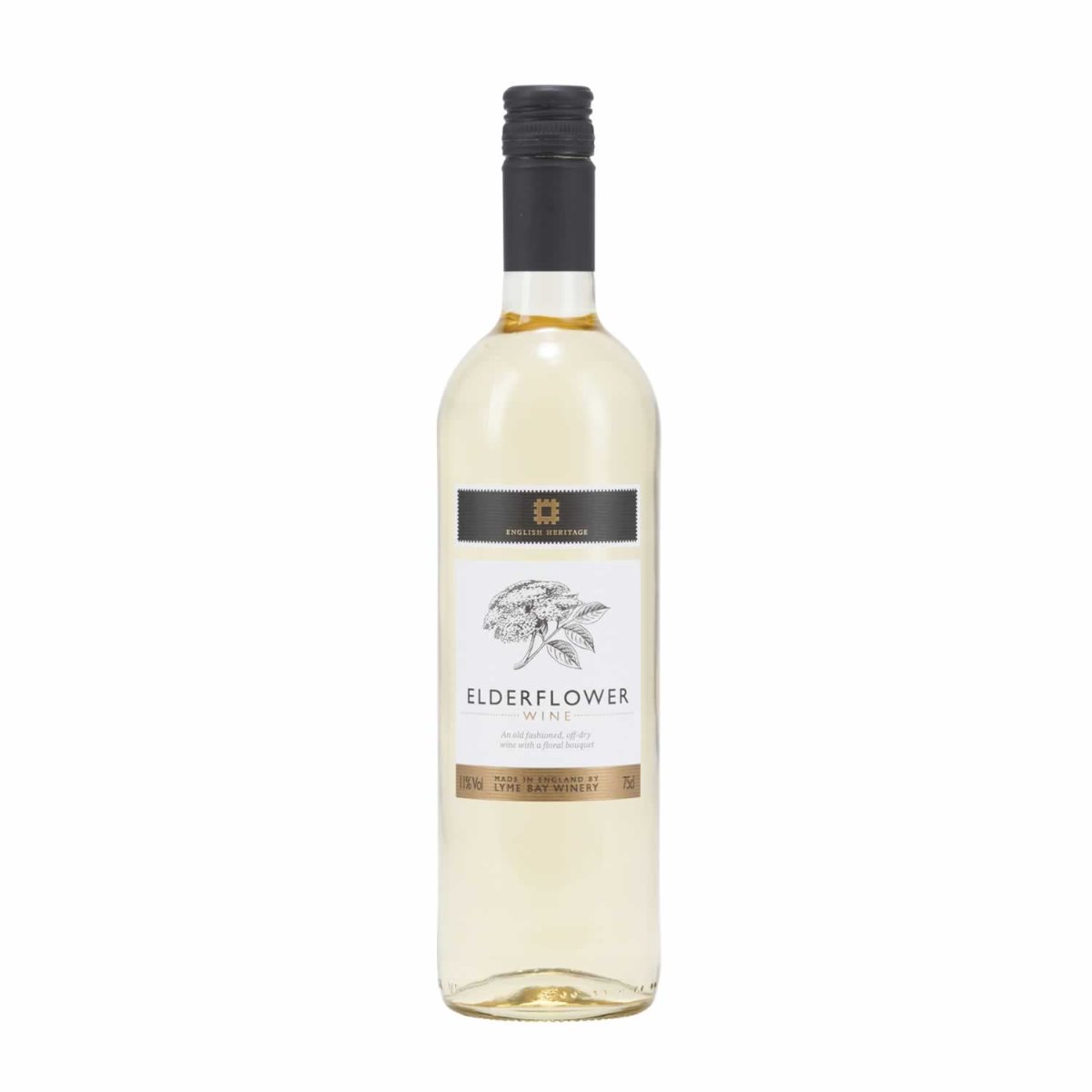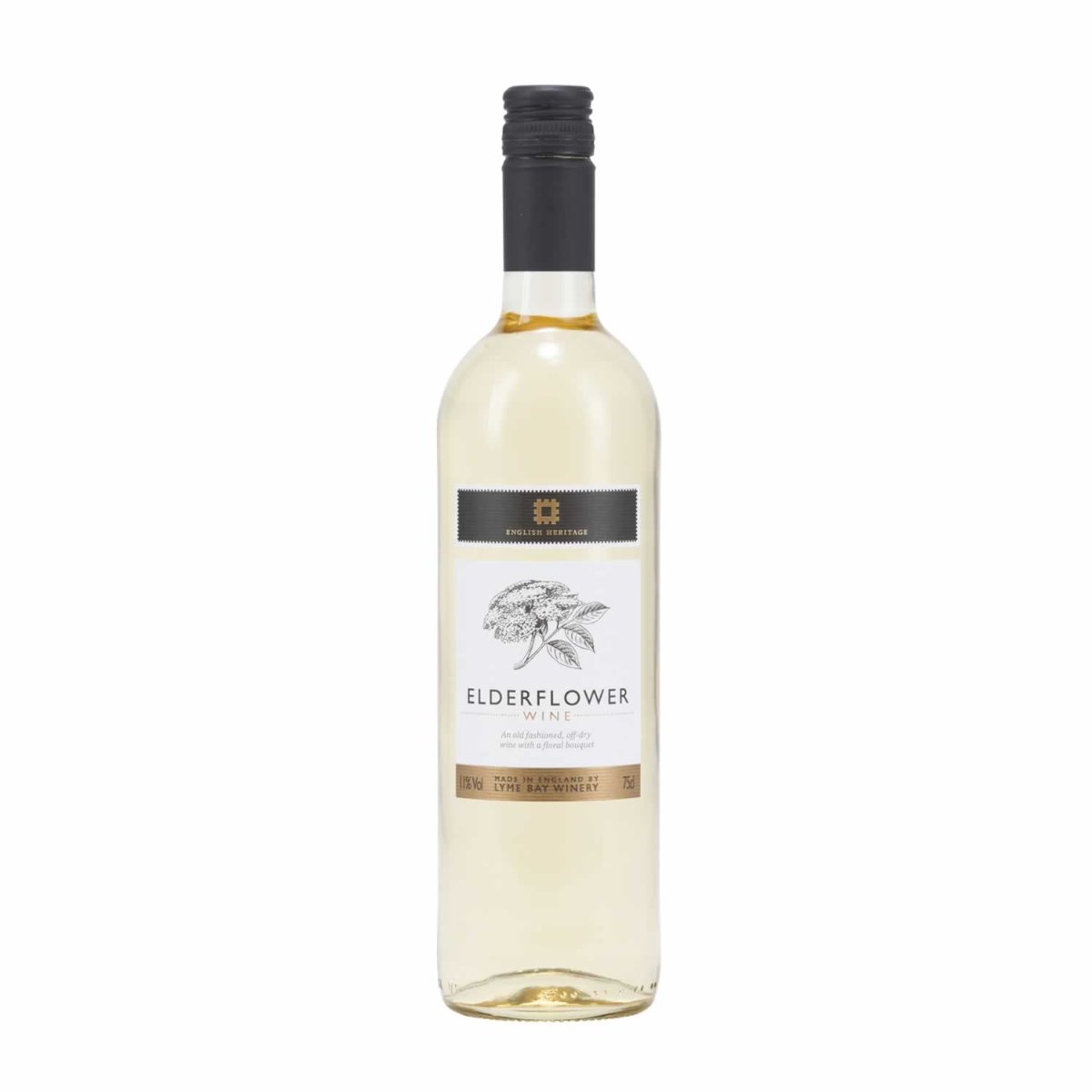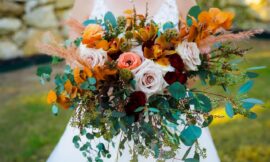
Among the most famous of English flower wines must surely be Elderflower. Flowering from May to June, the Elder tree blooms with panicles of creamy white flowers. Deeply scented, with rich smells of Muscat grapes the Elder can be a source of excellent flower wine material. However, the winemaker must know a little about the various types of Elder trees and bushes. The best way to select elderflowers suitable for winemaking, is to go to the trees when in full bloom, and smell the flowers.
How to Choose Elderflowers for Wine Making
Shake off any insects and take a good sniff. Does it smell attractive and free from ‘cattiness’? Elders vary tremendously from tree to tree and choosing the right flowers makes all the difference in fermenting a quality wine. As a broad rule, look for bushes with white, rather than creamy flowers. Pick only those with a clean fragrant scent. Don’t just pull off flower heads. Wait until the flowers are ready to drop, then cover them in a paper bag and shake them. This should give ample florets and scented pollen, leaving the seed containers to develop into elderberries to harvest later in the year. Collect your fruit harvest from the same trees in August. As a guide, trees with good flowers, produce berries of good quality.
Having collected your flowers, either put the bags into your deep freeze, or use them straight away. Fresh flower material cannot be kept in a sealed plastic bag for long, as the dampness rots them quickly. Fresh flowers can also be dried for use in the future, by spreading them thinly on trays in a low warm oven and letting them dry gently for an hour or so at 80-100 F. One or two ounces of dried flowers are usually enough to make a gallon of wine.
Most flowers supply only bouquet and flavour and perhaps a little colour, so have to be helped out with fruit juices, dried fruits, nutrients and other additives purchased from a winemaking store. You do not have to be a scientific genius to realise, for example, that there is little or no acid in flowers and as acid is essential for a healthy fermentation, some has to be added.
Elderflower Wine Recipe
Ingredients
- 1 pint elderflowers
- 1 kilo (2.2 lbs) white granulated sugar
- 1-lb sultanas or ½ pint white grape concentrate
- 1 teaspoon each of nutrient, pectin enzyme and tartaric acid
- activated wine yeast
Method:
- Stir the wine yeast, if dried, into a cupful of luke-warm water, cover with Clingfilm and leave for 20 minutes. Dissolve the sugar in 1½ pints boiling water and leave to cool. Rinse the flowers in a weak sulphite solution (1 Campden dissolved in a pint of water), and leave to drain. Rinse the sultanas in hot water to remove any oil, drain and chop or mince coarsely.
- Drain the flowers, put sultanas or grape juice, nutrient and acid in a fermenting bucket, add the sugar syrup and 4 pints of cold water. When the must is cool, add the pectic enzyme and yeast mix and cover. Keep in a warm place for three days, then strain the must from the sediment and solids through a piece of muslin. Pour through a funnel into a demijohn, top up to the shoulder with cold boiled water and fit the airlock (half filled) and rubber bung. Keep in a warm place for several weeks, until the fermentation ends.
- The wine will then start clearing from the surface down. Rack the cleared wine into a clean, sterilised, demijohn and add a teaspoon of wine finings and a crushed Campden tablet. Top up with cold water to the shoulder of the jar. You can also add a teaspoon of Potassium sorbate which will prevent your sweet wine from re-fermenting. This must be in addition to the Campden tablet. Sweeten the wine to taste with a little more sugar syrup or a non-fermenting sweetener and store. Bottle after three months.




